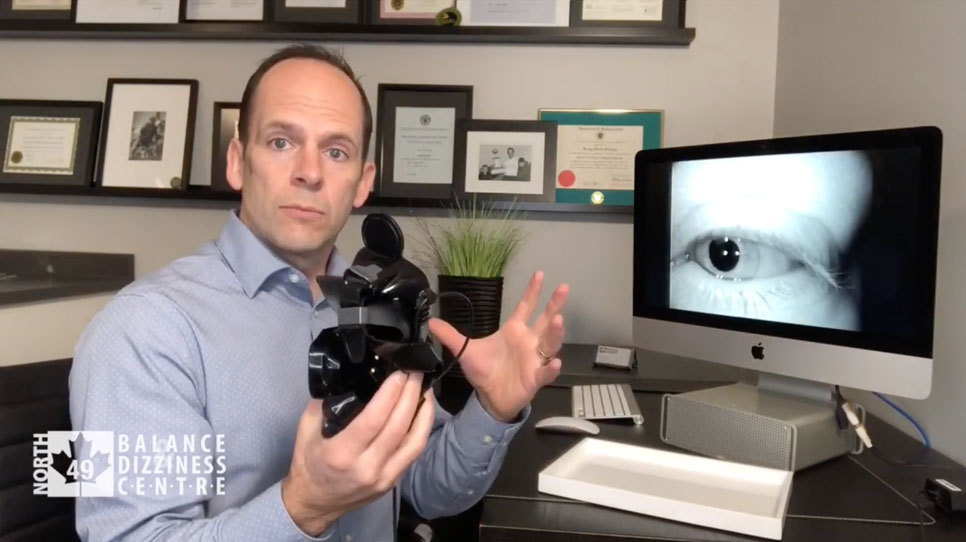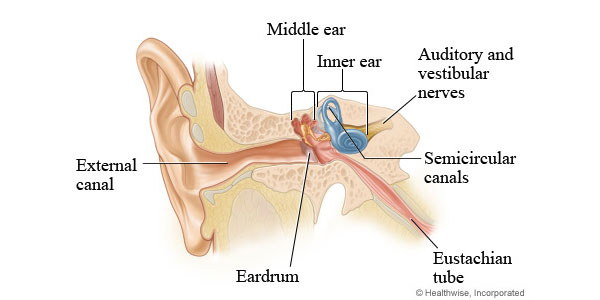It comes out of nowhere. The earth around you seems to tilt and sway and you feel like you might fall. Your stomach lurches. The lyrics from the the 1969 hit song by Tommy Roe aptly describe your state: “Dizzy, my head is spinning. Like a whirlpool it never ends…”
Vertigo. It is more common than you think, with nearly 40 percent of people over 40 being affected at least once in their lifetime. But what is vertigo, and how is it treated?
Some things you should know about vertigo:
Vertigo is not a fear of heights
The 1958 Hitchcock film immortalized the term “vertigo”. But while the film got its special effects right, it got the condition wrong. The condition Jimmy Stewart’s character had is acrophobia, or fear of heights, not vertigo. Acrophobia can make a person feel dizzy, but it’s not the same thing.
Having vertigo is not just any type of dizziness
Dizziness is a broad term that can be described as feeling faint, light headed, unsteady. Lots of things can make you dizzy: blood pressure, blood sugars, anemia, hormones, stress, anxiety, medications, eye problems, ear problems, neck problems, brain problems, heart problems, etc… So, many things that go wrong with your body can make you feel dizzy. Vertigo, on the other hand, has only two causes: Inner ear or Brain. These two categories are called otological/peripheral vertigo, or central vertigo. On that note:
Vertigo is not a disease, but rather a symptom of a vestibular disorder
The vestibular system includes the parts of the inner ear and brain that help control balance and eye movements. If the system is damaged by disease, aging, or injury, vestibular disorders can result, and are often associated with various symptoms, including: Vertigo. (www.vestibular.org)
Vertigo is a specific type of dizziness accompanied by spinning, swaying sensations that can make you feel unsteady. Another good way to tell if you’re experiencing vertigo is if you feel like you’re going to toss your cookies. Vertigo can be accompanied by nausea and vomiting — a major difference separating it from general dizziness, which simply makes you feel momentarily unbalanced. Other symptoms include: balance problems and lightheadedness, a sense of motion sickness, tinnitus, a feeling of fullness in the ear, headache.
- North 49 Physical Therapy now offers ONLINE VIDEO-CONFERENCING THERAPY, to anywhere worldwide. Book your video call today.
Vertigo is less likely to be caused by the brain than the inner ear
Remember the two categories of vertigo? If it’s the brain, or central vertigo, there are usually other accompanying signs and symptoms, such as slurred speech, double vision, poor coordination, facial droop, and/or severe headaches.
Causes for central nervous system vertigo include, but are not limited to: stroke, Multiple Sclerosis, concussion/brain injury, cerebellar atrophy, brain tumour, Chiari Malformation, and vertebral artery insufficiency.
However, vertigo due to an inner ear disorder, or otological/peripheral vertigo, is much more often the case.
Vertigo could be caused by the tiny rocks in your head
BPPV, benign paroxysmal positional vertigo is the most common form of peripheral vertigo. Inside your ear are otolith organs that monitor the movements of your head and your head’s position related to gravity. These otolith organs contain crystals (or otoconia) that are sensitive to gravity. For a variety of reasons these crystals can become dislodged and move into one of the ear’s three semicircular canals, which contain fluid and hair like sensors that detect the movement and acceleration of your head. When that happens the canal becomes sensitive to head positions it would not normally respond to, making you feel dizzy. (mayoclinic.org)
There are other causes for Vertigo
The second most common cause for peripheral vertigo is the result of an inner ear infection. Specifically, it is called vestibular neuritis if there is no associated hearing loss and labrynthitis if there is associated hearing loss. Meniere’s disease is the third most common culprit of peripheral vertigo.
There is treatment for Vertigo
Vestibular Therapy which is often provided by a physical therapist has been shown to be an effective treatment approach to vertigo. However, the specific treatment varies based on the exact cause of the vertigo. At North 49, we are proud to provide Vestibular Therapy by team members who are highly skilled in this area. Given their level of expertise team members are often asked to teach other health care providers how they can assess and manage dizziness better.
What is Vestibular Therapy?
Vestibular Therapy is therapy provided by a Physical Therapist or Occupational Therapist specially trained in treating balance and dizziness disorders. Balance disorders are assessed and treated with modalities such as prescribing appropriate balance exercises, treating the dizziness, and/or by determining if the use of ambulatory aides are appropriate.
Complaints of dizziness, if arising from the vestibular system, may be treated with particle positioning techniques, specific exercises, dietary guidelines and education, depending on the cause.
What’s up with those goggles you use with dizzy people?
Videonystagmography (VNG) goggles help us ensure we are not missing anything and we will discuss the use of VNG goggles in another blog.
Now you know what vertigo is and what it isn’t. And the good news is that there are treatment options. Are your symptoms vertigo? Is it wreaking havoc on your life?
We invite you to book an ONLINE VIDEO APPOINTMENT with North 49 Physical Therapy today. Let us help you move better and live better.


